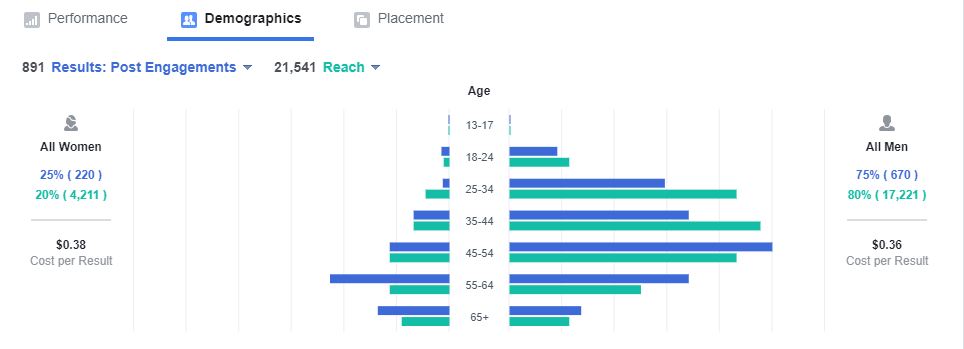Facebook Marketing Daily Checklist
Whether you think it or not, Facebook has become an all-in-one platform for you business. It combines a space for your business to live (your business’ page), it has integrated marketing and ads, and it allows you to interact and engage with your community.
I like to think of it as a trade show that’s going on every day. You already have your own website (store), or you should, you probably run marketing initiatives outside of Facebook (fliers, billboards, etc), and you likely network with real people at physical places. All that’s missing is traveling to trade shows and showcasing your company and your products and services.
Think about it. You rent your space (in this case it’s free), you’re able to promote your business in the platform by sponsoring it (running ads), and you network with clients and customers through the platform.
With so many features, possibilities, and things to do, it’s easy to get lost in a sea of tasks and forget about crucial Facebook marketing strategies.
So here’s my gift to you, a Facebook Marketing Checklist!
Check Notifications and Engage
If you’ve checked out one my last posts, “9 Social Media Marketing Trends to Use in 2018”, then you’re aware that engaging with your audience and maintaining your brand accountability is paramount on social media.
But what does that mean? It means you need to respond to ALL of your messages, comments, and reviews. No matter how negative they may be, considering 72% of people expect a quick response from a brand after a complaint.
So the first thing to check off your list each day is check your notifications and engage! You should also be doing this throughout the workday too. Don’t make it a one time a day thing.
Review Engagement Performance Rate
Whether you’re only posting organically, paid, or a mixture of both, you’re going to have performance metrics reported to you by the platform. Metrics like, how many clisk you got, how many shares, comments etc.
If you’re using Facebook’s Ads Manager to run ads, then you’ll get much more detailed statistics like demographics, best times of day, people who saw your ad (impressions), etc.
But why is this important?
This is important because, like Peter Drucker famously quoted, “You can’t manage what you can’t measure… if you can’t measure it, you can’t improve it.”
It’s important to know what posts and ads are and are not performing, especially if you’re A/B testing different ad copies.
Reviewing these engagement rates will also help you to determine what kinds of posts get the most engagement. Considering how Facebook uses engagement as newsfeed ranking signals, it’s important to post high quality stuff for your audience.
Review Ad Campaign Delivery and Metrics
Speaking to reviewing engagement rates, you’re going to want to check ad campaign delivery stats and metrics. Facebook’s Ads Manager allows you to see some pretty detailed information like demographics of your ad delivery, on Facebook your ads have been placed, post engagement, cost per result, and much more.
Knowing this information, especially the demographics portion is going to help you understand your customer persona. Your customer persona is extremely important in knowing your audience and writing ad copy just for them.
Which also allows you to A/B test effectively.
A/B Testing
Just an FYI, A/B testing, also known as “Split Testing” is when you run two of the same ad, landing page, or even email, but one is slightly different in one way, though they are the same ad. You might feature the same image with different ad copy, the same ad copy but a different image. It could even be as something as simple as changing a button on a landing page from green to orange to see which ones have better interaction rates.
Remember 7th grade science experiments? You have a control and a variable. The control is you ‘A’ and the variable is your ‘B’, hence “A/B Testing”
If it’s a Friday night for you and you’ve already uncorked your wine and have got some time to kill, I’d recommend checking out this quick video on How to Use Split Testing To Improve Your Business
I won’t even judge you if it’s Tuesday…
Conversion Tracking
Checking your conversion tracking is important to know which ads and posts are actually turning into dollars. Likes, comments, shares… these are all just ‘fluff’ metrics. What matters to a business is the bottom line. Are these likes, comments, and shares turning into paying customers?
How would you know?
Well there are two things you can do.
The first thing you can do is make sure you use Facebook’s tracking pixel on your website. This is going to tell you how many people ‘converted’ (turned into leads) off of your website from navigating off of Facebook onto your website.
Another thing you can do is if you have goals set up with Google Analytics or Google Tag Manager properly, then you can check out your Assisted Conversions report and see how many people completed a goal on your site that had come from social media at one point in time.
However, if you don’t use the tracing pixel, you won’t be able to tell which ad or post the conversion came from.
You want to see which ads and posts are performing and not just providing these fluff metrics. Although the number of likes may feel good to you, they most likely aren’t turning into anything valuable to you.
Cancel or Pause Ads
If an ad is doing poorly compared to other ads, pause or cancel the ad. If you’re consistently not checking your ad performance, you won’t be able to notice trends and patters with your demographics and times of day which would help to know to build your customer personas.
The worst thing you could do is let an ad run for a week without ever checking it and notice something went wrong. Maybe the Facebook gatekeepers denied your ad while it was running and it hasn’t ran for days. Or maybe it’s overspending outside of your budget. But most of all, what if it’s just not performing? Don’t waste time and money on under performing ads. Your dollars and time are better spent in ads and posts that are proving themselves.
Review Upcoming and Scheduled Posts
If you’re following the Daily Digital Marketing Tasks for Small Businesses, then you should already have posts scheduled out ahead of time. Take some time to review these each day quickly. Creative work like writing ad copy or coming up with new posting ideas can become monotonous and things can be missed, like spelling and grammar.
Reviewing your upcoming posts with a fresh set of eyes daily will definitely help you catch any mistakes you might of made.
Unless you’re me. And you NEVER make a mistake…
Seek New Content and Posting Opportunities
There are two big factors when creating an ad or post:
1) Content
2) Context
Everyone know content is king. But not everyone knows that context is queen. And without both, you only have a kingdom of one.
And we all know how a kingdom of one works out. Just ask Joffrey Baratheon.
Oh wait…
Content can be timeless, meaning it can be duplicated and reposted over time. And if not 100% duplicated, content themes can be replicate, such as #FridayFunny posts or other scheduled thematic posts for certain days of the week or month.
Context is the time, audience, and place the content occurs. Since I specialize in marketing for landscaping and lawn care companies, I would create an ad for getting rid of fungus in your yard. That’s the content.
The context would be getting rid of fungus in your yard after a rainy week and sharing the ad or blog post during or after we had just received a lot of rain.
The content makes the post informative, and the context makes it relevant.
Are you pickin’ up what I’m layin’ down?
Don’t only seek opportunities for content based on keyword research or customer feedback, seek opportunities for when to post and why. Holiday posts are a good example of this. Google what weird holidays are coming up. Like national waffle day or something dumb like that and try to work it into your copy. It’ll be informative to your customer to know what you have to say about your brand, it would be entertaining to learn that it’s national waffle day from your brand, and it would be relevant.
To make matters worse, it’s important to know how often you should be posting content on each social platform. This can be a real head ache when you’re completely out of ideas.
But guess what I did for you? I created a fairly comprehensive list on how often you should post on 6 social media platforms, including Facebook.
And if you still aren’t sure, then we can help you out with our Monthly Marketing Solved program. Which is a super affordable way to have your Facebook ads, graphics, schedules, and posting all be done for you by the professionals here at Marketing Solved every single month. All for only $67/mo.
How can you pass that up? I pay my lawn guys to cut my small yard bi-weekly for $80/mo. Imagine paying less than that and then also getting a positive return on that!
Summary
If you just skipped to the bottom to read the summary or skimmed this post then you missed some good jokes.
But if you’re Kanye then you don’t laugh anyways. So here’s the TL;DR.
Your Daily Facebook Marketing Checklist
1) Log on everyday and check your engagements. Don’t just check your engagements but respond, like, and interact. You should also be doing this throughout the day.
2) Review your engagement performance rate. Don’ just engage and respond. That’s too easy. See the metrics and figure out what posts are and are not working.
3) Review your ad campaign and delivery metrics. Facebook automatically runs your ads, and if you don’t monitor them, they can quickly spiral into a problem.
4) Review upcoming and scheduled posts. Take a look at the posts you have coming up with a fresh set of eyes. Catch mistakes that may be scheduled out automatically.
5) Seek new content and posting opportunities. Content isn’t always just something the divine powers are going to beam into your head. You have to be actively looking for posting opportunities.
But craftsman is only as good as his tools, and we want you to be the best craftsman for your trade there is!








